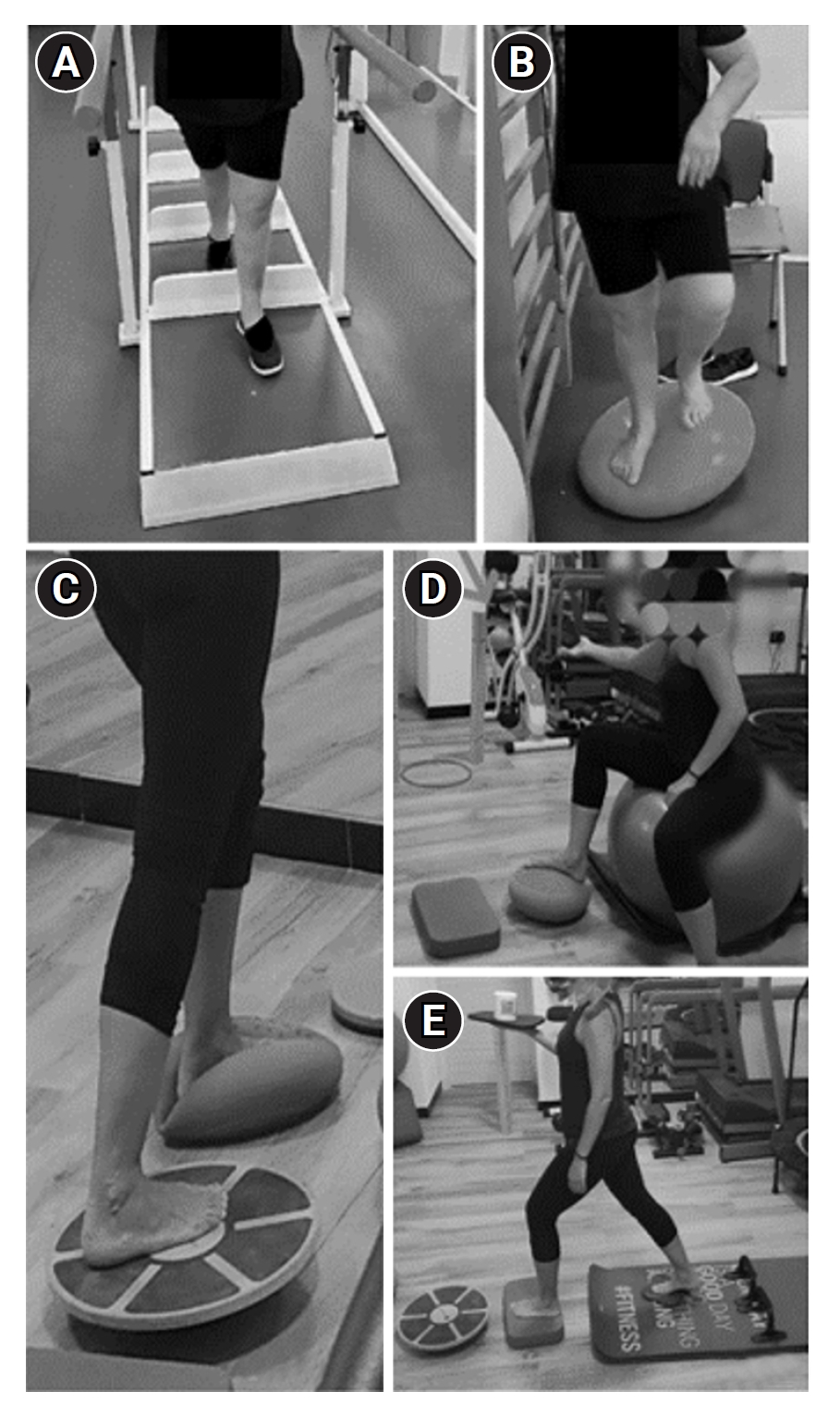1. Donkor ES. Stroke in the 21
st century: a snapshot of the burden, epidemiology, and quality of life. Stroke Res Treat 2018;2018:3238165.



2. Kelly C, Meyer J, Hanks V, Barefield C. Neurorehabilitation for an individual with bilateral thalamic stroke and preexisting visual impairment presenting with impaired use of sensory cues: a case report. Physiother Theory Pract 2021;37:1139-45.


5. Kim OJ. Development of neurophysiology in the early twentieth century: Charles Scott Sherrington and The Integrative action of the nervous system. Uisahak 2001;10:1-21.

6. Riemann BL, Lephart SM. The sensorimotor system, part I: the physiologic basis of functional joint stability. J Athl Train 2002;37:71-9.


7. Ribeiro F, Oliveira J. Aging effects on joint proprioception: the role of physical activity in proprioception preservation. Eur Rev Aging Phys Act 2007;4:71-6.


10. Han J, Waddington G, Adams R, Anson J, Liu Y. Assessing proprioception: a critical review of methods. J Sport Health Sci 2016;5:80-90.


11. Kaner MT, Hon E, He T, Patira R, Altschuler EL. Rehabilitation after complete hemisensory loss: report of two cases. Am J Phys Med Rehabil 2020;99:86-90.


12. Gorst T, Rogers A, Morrison SC, Cramp M, Paton J, Freeman J, et al. The prevalence, distribution, and functional importance of lower limb somatosensory impairments in chronic stroke survivors: a cross sectional observational study. Disabil Rehabil 2019;41:2443-50.


19. Mansfield A, Wong JS, McIlroy WE, Biasin L, Brunton K, Bayley M, et al. Do measures of reactive balance control predict falls in people with stroke returning to the community? Physiotherapy 2015;101:373-80.


21. Chiaramonte R, Bonfiglio M, Chisari S. Multidisciplinary protocol for the management of fibromyalgia associated with imbalance. Our experience and literature review. Rev Assoc Med Bras (1992) 2019;65:1265-74.


22. Jensen MP, Turner JA, Romano JM. What is the maximum number of levels needed in pain intensity measurement? Pain 1994;58:387-92.


23. Castiglia SF, Galeoto G, Lauta A, Palumbo A, Tirinelli F, Viselli F, et al. The culturally adapted Italian version of the Barthel Index (IcaBI): assessment of structural validity, inter-rater reliability and responsiveness to clinically relevant improvements in patients admitted to inpatient rehabilitation centers. Funct Neurol 2017;22:221-8.


24. Tinetti ME, Richman D, Powell L. Falls efficacy as a measure of fear of falling. J Gerontol 1990;45:P239-43.


25. Ottonello M, Ferriero G, Benevolo E, Sessarego P, Dughi D. Psychometric evaluation of the Italian version of the Berg Balance Scale in rehabilitation inpatients. Eur Medicophys 2003;39:181-9.
26. Ferraresi G, Buganè F, Cosma M, Agarici M, Vio A, Manca M, et al. Timed up and go test (tug) temporal phases assessment using a wireless device (free4act
®): method validation in healthy subjects. Gait Posture 2013;37(Suppl 1): 30-1.

27. Hillig T, Ma H, Dorsch S. Goal-oriented instructions increase the intensity of practice in stroke rehabilitation compared with non-specific instructions: a within-participant, repeated measures experimental study. J Physiother 2019;65:95-8.


30. Vecchio M, Gracies JM, Panza F, Fortunato F, Vitaliti G, Malaguarnera G, et al. Change in coefficient of fatigability following rapid, repetitive movement training in post-stroke spastic paresis: a prospective open-label observational study. J Stroke Cerebrovasc Dis 2017;26:2536-40.


34. Chiaramonte R, Cioni M. Critical spatiotemporal gait parameters for individuals with dementia: a systematic review and meta-analysis. Hong Kong Physiother J 2021;41:1-14.


35. De Freitas TB, Leite PHW, Doná F, Pompeu JE, Swarowsky A, Torriani-Pasin C. The effects of dual task gait and balance training in Parkinson’s disease: a systematic review. Physiother Theory Pract 2020;36:1088-96.


36. Morelli N, Morelli H. Dual task training effects on gait and balance outcomes in multiple sclerosis: a systematic review. Mult Scler Relat Disord 2021;49:102794.


37. Baek CY, Chang WN, Park BY, Lee KB, Kang KY, Choi MR. Effects of dual-task gait treadmill training on gait ability, dual-task interference, and fall efficacy in people with stroke: a randomized controlled trial. Phys Ther 2021;101:pzab067. Erratum in: Phys Ther 2022;102:pzab184.


39. Kannan L, Vora J, Bhatt T, Hughes SL. Cognitive-motor exergaming for reducing fall risk in people with chronic stroke: a randomized controlled trial. NeuroRehabilitation 2019;44:493-510.


42. Anandan D, Tamil Nidhi PK, Arun B, Vishnu P. Effect of task specific training with proprioceptive neuromuscular facilitation on stroke survivors. Biomedicine 2020;40:363-6.

43. Saleh MSM, Rehab NI, Aly SMA. Effect of aquatic versus land motor dual task training on balance and gait of patients with chronic stroke: a randomized controlled trial. NeuroRehabilitation 2019;44:485-92.


44. Hackney ME, Hall CD, Echt KV, Wolf SL. Application of adapted tango as therapeutic intervention for patients with chronic stroke. J Geriatr Phys Ther 2012;35:206-17.


45. Traxler K, Baum E, Klotz E, Reindl M, Schinabeck F, Seebacher B. Combining specific task-oriented training with manual therapy to improve balance and mobility in patients after stroke: a mixed methods pilot randomised controlled trial. Disabil Rehabil 2023;doi: 10.1080/09638288.2023.2193432. [Epub ahead of print].

46. Fishbein P, Hutzler Y, Ratmansky M, Treger I, Dunsky A. A preliminary study of dual-task training using virtual reality: influence on walking and balance in chronic poststroke survivors. J Stroke Cerebrovasc Dis 2019;28:104343.











